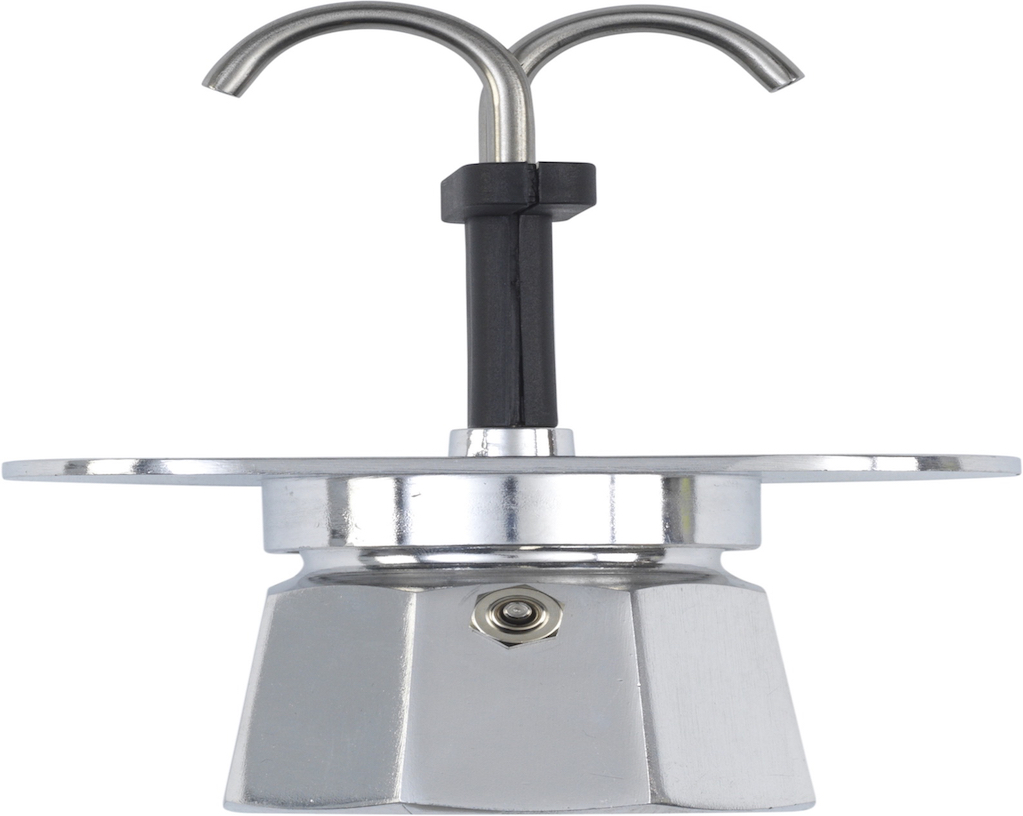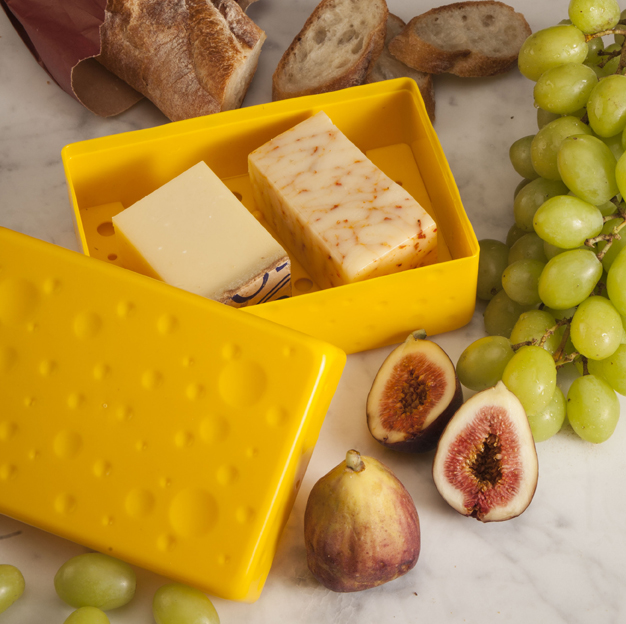 Bonnie: If you’re a meat eater, I’ll bet that you’ve tried various methods of tenderizing various cuts of it… from pounding the meat between sheets of wax paper using the back of a cast-iron pan to hitting it with a metal-spiked mallet, or just asking the butcher to do it. I know I’ve done them all at one time or another with some methods being effective, others pretty messy, none perfect.
Bonnie: If you’re a meat eater, I’ll bet that you’ve tried various methods of tenderizing various cuts of it… from pounding the meat between sheets of wax paper using the back of a cast-iron pan to hitting it with a metal-spiked mallet, or just asking the butcher to do it. I know I’ve done them all at one time or another with some methods being effective, others pretty messy, none perfect.
When I received my sample of the Microplane Meat Tenderizer, I put it aside, waiting for a time when I was cooking meat. Since I’ve had my empty nest, I don’t often prepare meat for myself. I generally cook it when Bryan or Eric is home or when I’m having company – and not always then. In other words: not very often. But when I do, I — of course — want it fork tender.
Knowing my past positive experience with the seriously razor-sharp etched blades of Microplane products, I thought for sure I’d like this tenderizer. BOTB had featured the classic Microplane Zester years ago. I use that tool for myriad foods – from zesting citrus fruits to grating ginger and garlic, and lots more …
When I finally served meat, I sampled this new utensil on a bison steak by rolling the tool along the meat, rocking it back and forth. Although the sharp edges cut into the meat, the meat stayed intact – not torn apart as it might get with the misuse of a mallet. I liked that. I also liked the resulting fork-tender steak. (Who wouldn’t?)
And I also liked that it opens for easy cleaning and closes with a clear cover that fits into the handle when in use and covers the blade for safe storage afterward. I found that the meat tenderizer works more effectively than other ones I have tried. It’s kind of cute, too, in a weird way!
 Bryan:The subject of this bite is kinda strange-looking. The Microplane Easy Prep Meat Tenderizer looks sort of like a ninja fighting weapon or maybe even a torture device used in the Spanish Inquisition. I have to say that my first thought was certainly not “kitchen utensil.” Don’t judge a book by its cover, I guess, because kitchen utensil is exactly what it is (though it could still double for either of the above mentioned uses). Microplane has added to its arsenal of gadgets a very inventive, very handy, very scary-looking product that will tenderize the toughest of meats with the very least of fuss.
Bryan:The subject of this bite is kinda strange-looking. The Microplane Easy Prep Meat Tenderizer looks sort of like a ninja fighting weapon or maybe even a torture device used in the Spanish Inquisition. I have to say that my first thought was certainly not “kitchen utensil.” Don’t judge a book by its cover, I guess, because kitchen utensil is exactly what it is (though it could still double for either of the above mentioned uses). Microplane has added to its arsenal of gadgets a very inventive, very handy, very scary-looking product that will tenderize the toughest of meats with the very least of fuss.
If you’ve ever tried to “soften” a steak with just a mallet, you’ll know what I’m talking about. The Microplane method is a stark contrast from standard counter-smashing techniques of old. Simply “rock” the tenderizer back and forth across your cut of meat, letting the sharp little teeth break down the connective fibers of the muscle. This underused method, usually reserved for restaurant kitchens, has been made easy enough to do at home. Try it; you’re sure to improve the taste and texture of your favorite meat dishes.
Almost 20 years of machining experience led to the creation of Microplane tools’ tiny razor-like edges. The unique cutting surfaces are formed by a process called photo-etching in which holes are created by dissolving the metal using a special chemical (rather than stamping holes into a metal surface like standard graters/blades). The result leaves edges that are far sharper, able to finely slice rather than tear and shred. We’re big fans of Microplane, and the company has simplified our kitchen lives once again. Also, the product is good for defending your kitchen from ninjas.
 Eric: I thought they were a pair of the baddest ass brass knuckles I had ever seen, then I read the product information and realized they were indeed brass knuckles, just designed for meat — more so, a meat tenderizer. Most people who eat meat probably don’t realize that the majority of what they consume is tenderized — the muscle fibers of the meat are softened, making it easier to cut, chew and digest. There are three types of meat tenderizers: The classic meat tenderizer resembles some type of medievil weapon similar to that of a hammer, the second style resembles a potato masher and the third type is a blade tenderizer.
Eric: I thought they were a pair of the baddest ass brass knuckles I had ever seen, then I read the product information and realized they were indeed brass knuckles, just designed for meat — more so, a meat tenderizer. Most people who eat meat probably don’t realize that the majority of what they consume is tenderized — the muscle fibers of the meat are softened, making it easier to cut, chew and digest. There are three types of meat tenderizers: The classic meat tenderizer resembles some type of medievil weapon similar to that of a hammer, the second style resembles a potato masher and the third type is a blade tenderizer.
“This tenderizer is designed for the common household,” says Stan, the in-house butcher at the hotel I work for. “Would I use it at work? No, but I’m a butcher. The everyday consumer could certainly make use of such a tool. Now educating them on how to properly use it would be the next step.”
And Stan is right. The everyday consumer doesn’t know the first thing about why they should want such a kitchen tool, but they need to. Take any lean piece of flank steak, roll the Microplane tenderizer over it a few times to puncture the muscle fibers, marinate the meat for an hour to absorb the flavor and you’ll soon realize why you purchased this little gadget from the days of the inquisition. That flank steak suddenly tastes like an aged boneless rib eye (maybe not quite, but the point is there). The Microplane Meat Tenderizer gets the Stan Kozlowski seal of approval, and that’s good enough for me.






I think that this would be a great item for home cooks to have, when I worked in the meat dept. as a kid we used a machine like a big pasta roller except that the rollers had cutters on them, feed the cut of meat in the top of the machine and voila tender meat out of the bottom was the result, loved that machine, we used to make cube steak with this machine..
Take a not so tender piece of meat and tenderize it… I think that I will have to get one of these for my kitchen…Thanks for the good info that you guys provide…
“Dave”
I would love to try this my wife has arthritis in her fingers and even she says that it would be much easier to use then whats already out there.
Great tips and information. I a meat dishes fan and gonna buy these products. I just wonder What kind of meat I should pound with Microplane Meat Tenderizer
Great tips and information. I will definitely buy one, just wonder what kind of meat should I pound with Microplane Meat Tenderizer